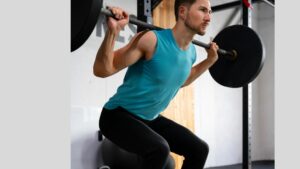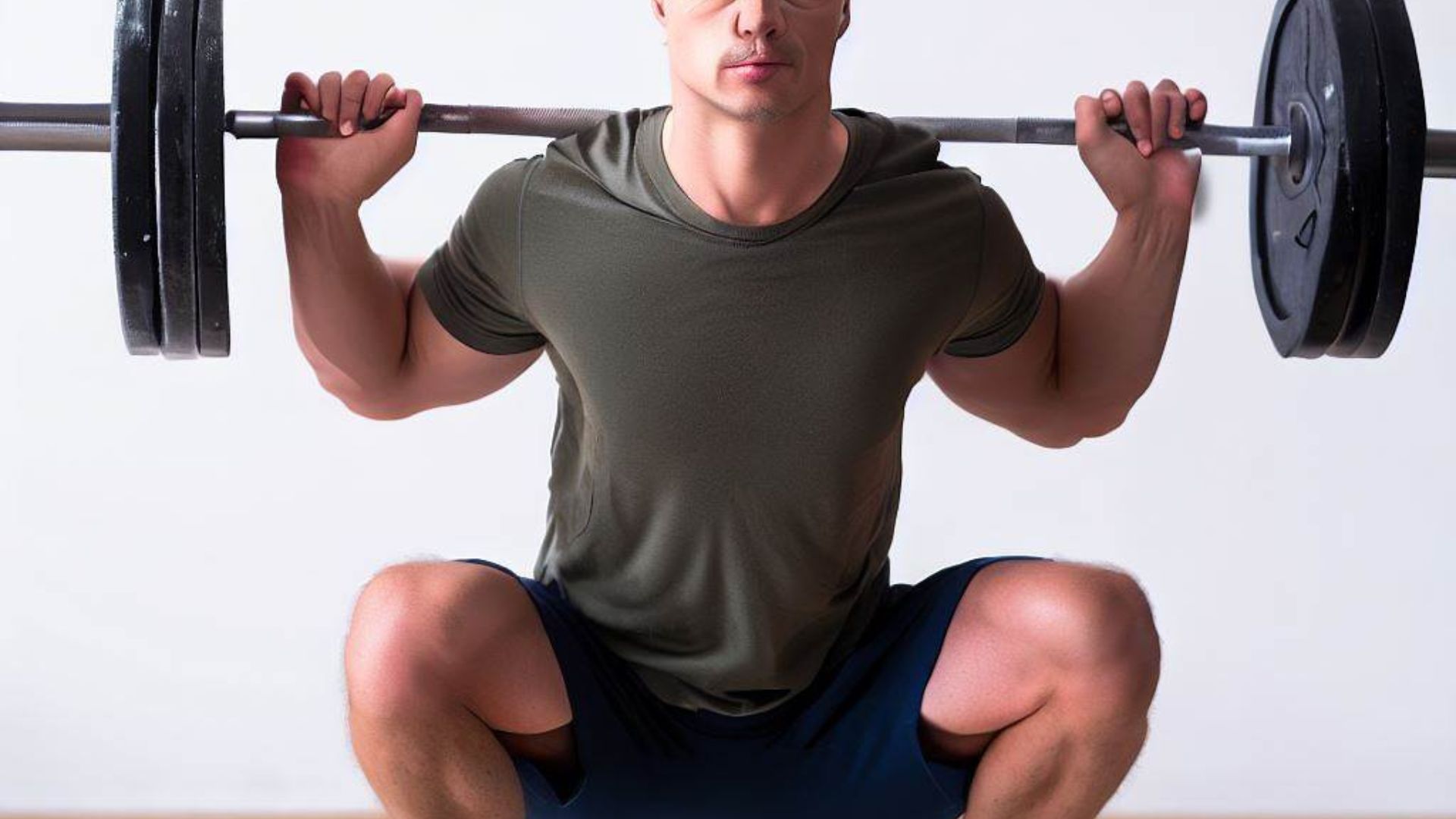Squatting is an effective compound exercise that targets various muscle groups in the lower body, including the quadriceps, hamstrings, glutes, and calves.
It is a fundamental movement pattern that can help increase strength, build muscle, improve mobility, and enhance overall athletic performance. However, determining the appropriate weight to squat can be challenging, especially if you’re 29 years old and looking to optimize your training.
In this article, we’ll explore the factors that influence squat weight and provide guidance on how much you should squat if you’re 29 years old.
The amount of weight you should squat depends on various factors, such as your fitness level, training experience, and individual goals. It is recommended to start with a weight that you can comfortably lift for 8-12 repetitions while maintaining proper form. As you progress, gradually increase the weight to continue challenging your muscles. Working with a qualified fitness professional can help you determine the appropriate weight and develop a safe and effective squatting routine.
It depends on your fitness level and experience.
When determining how much weight to squat, several factors come into play. Your fitness level, training experience, and individual goals are important considerations.
Starting with a weight that allows you to perform 8-12 repetitions with proper form is a recommended approach.
Why start with a weight you can handle comfortably? It’s crucial to prioritize proper form and technique to avoid injuries.
By choosing a weight that challenges you but still allows for controlled movement, you can focus on maintaining good posture, stability, and alignment throughout the squatting motion.
As you become more proficient and build strength, gradually increasing the weight is necessary to continue making progress and stimulating muscle growth.
This progressive overload principle helps your muscles adapt and develop over time. However, it’s important to do this incrementally and within your limits to prevent strain or injury.
What to take into consideration.
Consider working with a qualified fitness professional, such as a personal trainer or strength coach. They can assess your current fitness level, guide you in selecting appropriate weights, and teach you proper squatting technique.
They may also recommend modifications or variations based on your specific goals, such as focusing on strength, hypertrophy, or power.
Here’s an example to illustrate this approach: Let’s say you’re a beginner with little previous weightlifting experience.
Starting with just the weight of a standard Olympic barbell (usually 45 pounds or 20 kilograms) could be a suitable starting point.
As you become comfortable and confident, you can gradually add weight in increments of 5-10 pounds or 2.5-5 kilograms over time.
The exact progression will vary based on your individual capabilities and goals.
Remember, the key is to listen to your body, maintain proper form, and progress at a pace that suits your abilities.

Why Working with a fitness professional is crucial.
Working with a qualified fitness professional when determining the appropriate weight for squatting and developing a safe and effective routine is crucial for several reasons:
Personalized guidance:
A fitness professional can assess your individual fitness level, strengths, weaknesses, and specific goals. They can provide personalized recommendations tailored to your needs, ensuring that the weight you choose for squatting aligns with your capabilities.
Injury prevention:
Squatting with improper form or using excessive weight can increase the risk of injuries, such as strains, sprains, or even more severe damage.
A fitness professional can teach you the correct technique, including body positioning, range of motion, and breathing patterns, to minimize the risk of injury.
Progression and overload management:
Progressively increasing the weight you squat is essential for continued improvement and muscle development.
However, knowing the appropriate increments and timing for weight progression can be challenging. A fitness professional can guide you in gradually increasing the weight while considering factors like your strength gains, recovery ability, and overall training program.
Form and technique correction:
Even experienced individuals may have subtle form issues or technique deficiencies that can hinder progress or lead to injury.
A fitness professional can identify and correct these issues, ensuring that you perform squats with proper form and maximize their effectiveness.
Confidence and motivation:
Working with a qualified fitness professional can instill confidence in your squatting abilities. They can provide support, encouragement, and expert advice, which can boost your motivation and help you stay consistent with your training.
Goal-specific programming:
Whether your goal is strength, hypertrophy, power, or general fitness, a fitness professional can design a squatting routine that aligns with your objectives.
They can incorporate variations, intensity techniques, and periodization strategies to optimize your progress and keep you challenged.
Remember that while a fitness professional is invaluable for guidance, it’s essential to choose someone who holds appropriate certifications and has experience in strength training and exercise programming. Their expertise and knowledge will ensure that you receive safe, effective, and tailored recommendations for squatting and overall fitness.
Here’s a tabular format outlining the recommended factors to consider when determining the appropriate weight for squatting, along with the reasons why they are important:
| Factors to Consider | Why It’s Important |
|---|---|
| Fitness Level | Determines your current strength and endurance levels. Helps set a starting point for weight selection. |
| Training Experience | Reflects your familiarity with squatting technique and overall resistance training. Guides progression and proper form. |
| Individual Goals | Different goals (strength, hypertrophy, power) may require varying weight selections and training approaches. |
| Proper Form | Maintaining proper form ensures safety, minimizes injury risk, and optimizes muscle recruitment. |
| Progressive Overload | Gradually increasing weight challenges muscles for growth and progress. Prevents plateauing and promotes adaptation. |
| Qualified Professional | Working with an expert ensures personalized guidance, form correction, injury prevention, and goal-specific programming. |
Considering these factors allows for a comprehensive approach to selecting the appropriate weight for squatting, maximizing effectiveness while minimizing the risk of injury. Remember, consulting with a qualified fitness professional is highly recommended to receive personalized advice and ensure safe and effective training.
Conclusion.
In conclusion, determining the appropriate weight for squatting is a multifaceted process that involves considering various factors such as fitness level, training experience, individual goals, and proper form.
Starting with a weight that allows for 8-12 repetitions with good form is recommended, gradually increasing the weight over time to promote progress and muscle development.
Working with a qualified fitness professional is crucial as they provide personalized guidance, form correction, injury prevention, and goal-specific programming.
By prioritizing safety, technique, and progressive overload, you can optimize your squatting routine and achieve your fitness objectives effectively.

Hey there, it’s Mike Rrsq, the Editor-in-Chief over at Jsquat.com, and I’m absolutely obsessed with all things squat fitness! I’ve been lucky enough to get some serious recognition for my work in this field. With a solid background in the fitness and wellness industry, I’ve been there right from the get-go, helping shape this website into what it is today.
You see, I’m not just the boss around here; I’m also a passionate contributor. I love sharing my insights through my articles, and trust me, they’re not your run-of-the-mill stuff. Each piece I write is a labor of love, filled with my expertise and real-world experience in the fitness universe. So, if you’re into fitness and looking for some inspiration, you’re in the right place!

